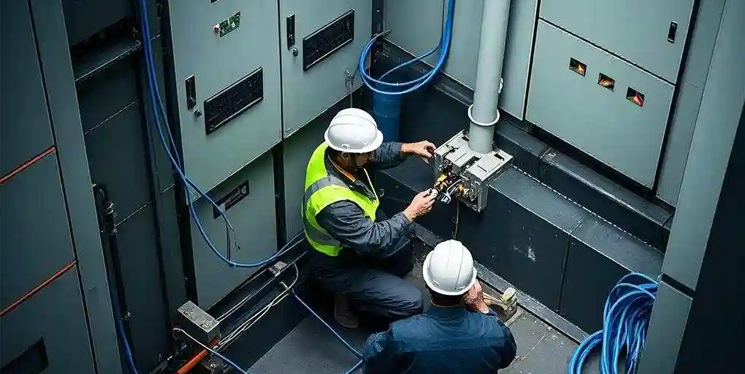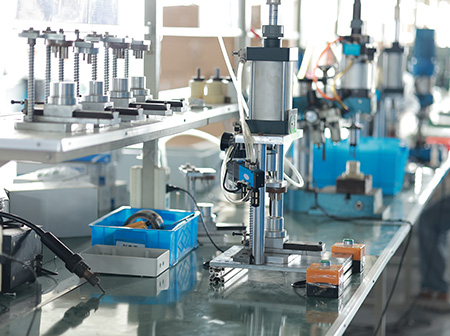In the realm of electrical systems, especially those involving batteries, an isolator switch is a crucial component. It serves as a safety device that allows you to cut off the electrical connection from the battery to the rest of the system, preventing accidental power discharge, protecting electrical components from damage, and enhancing overall safety. Whether you're working on a vehicle, a marine vessel, or an off - grid power system, knowing how to properly install an isolator switch for your battery is a valuable skill. This comprehensive guide will walk you through the entire installation process, from understanding the types of isolator switches to the step - by - step installation procedures and safety precautions.
What is an Isolator Switch?
An isolator switch, also known as a battery disconnect switch, is an electrical switch that physically isolates the battery from the electrical circuit. When the switch is in the "off" position, it breaks the electrical connection, ensuring that no current flows from the battery to the connected devices or systems. This is particularly useful in situations where you need to perform maintenance on the electrical system, store a vehicle or equipment for an extended period, or prevent battery drain when the system is not in use.
Types of Isolator Switches
1.Manual Isolator Switches: These are the most common type of isolator switches. They require physical operation, usually by turning a knob or flipping a lever, to open or close the electrical circuit. Manual isolator switches are simple, reliable, and cost - effective, making them suitable for a wide range of applications.
2.Automatic Isolator Switches: Automatic isolator switches operate based on certain conditions, such as low battery voltage or excessive current draw. They are often used in more complex electrical systems where immediate disconnection is required to protect the battery and other components. For example, in a vehicle's electrical system, an automatic isolator switch may disconnect the battery if it detects a short circuit to prevent damage.
3.Remote - Controlled Isolator Switches: As the name suggests, these isolator switches can be controlled from a remote location. They are typically used in applications where it's inconvenient or unsafe to access the switch physically, such as in large marine vessels or industrial equipment. Remote - controlled isolator switches can be operated using a wired or wireless control system.
Gather the Necessary Tools and Materials
Before you start the installation process, make sure you have all the required tools and materials on hand. You'll need a set of wrenches or pliers to loosen and tighten the battery terminals and any bolts or screws associated with the isolator switch. A screwdriver may also be needed if the switch has mounting screws. Additionally, you'll require electrical tape to insulate any exposed wires and wire nuts to secure the electrical connections. Of course, you'll need the isolator switch itself, which should be compatible with your battery's voltage and current ratings.
Select the Right Location
Choosing the appropriate location for the isolator switch is crucial. It should be installed in a dry, accessible area near the battery but away from any sources of heat or moisture. In a vehicle, a common location is under the hood, close to the battery. In a marine vessel, it may be installed in a battery compartment or a dedicated electrical panel. Ensure that the location allows for easy operation of the switch and provides enough space for routing the electrical wires.
Disconnect the Battery
Safety first! Before installing the isolator switch, always disconnect the battery. Start by removing the negative (-) terminal cable from the battery. Use a wrench to loosen the nut holding the cable in place, and then carefully pull the cable off the terminal. This step prevents any accidental electrical shocks or short circuits during the installation process. After disconnecting the negative terminal, remove the positive (+) terminal cable in the same manner.
Mount the Isolator Switch
Using the mounting hardware provided with the isolator switch, attach it to the chosen location. Make sure the switch is firmly secured and will not vibrate or move during operation. If you're using screws, tighten them evenly to avoid warping the switch or the mounting surface.
Connect the Battery Cables
1.Positive Terminal Connection: Take the positive terminal cable from the battery and connect it to the input terminal of the isolator switch. This is usually marked with a "+" sign or labeled "Battery +". Use a wrench or pliers to tighten the connection securely, ensuring there is good electrical contact.
2.Output Terminal Connection: Connect the positive cable that leads to the rest of the electrical system to the output terminal of the isolator switch. This terminal is typically marked "Load +" or something similar. Again, make sure the connection is tight to prevent any loose connections that could cause electrical problems.
3.Negative Terminal Connection: Reconnect the negative terminal cable from the battery to its original location on the vehicle or system. Ensure that the connection is clean and tight to maintain a good electrical ground.
Route and Secure the Wires
Once the electrical connections are made, carefully route the wires to avoid any sharp edges or moving parts that could damage them. Use wire ties or cable clamps to secure the wires in place, keeping them organized and out of the way. If necessary, use electrical tape to cover any exposed wire sections to prevent short circuits.
Test the Isolator Switch
After completing the installation, it's time to test the isolator switch. First, turn the switch to the "on" position. Then, try to start the vehicle or turn on the electrical system to ensure that power is flowing properly. Next, turn the switch to the "off" position and verify that the electrical system is completely disconnected. You can do this by checking if the lights, radio, or other electrical components no longer function.

Safety Precautions
• Always wear appropriate personal protective equipment, such as gloves and safety glasses, when working with batteries and electrical systems.
• Make sure the area is well - ventilated, as batteries can release flammable hydrogen gas. Avoid smoking or using open flames near the battery.
• Double - check all electrical connections to ensure they are tight and secure. Loose connections can cause overheating and potentially start a fire.
• If you're unsure about any part of the installation process, consult a professional electrician or refer to the manufacturer's instructions.
If the electrical system does not work when the isolator switch is in the "on" position, check the connections to make sure they are correct and tight. It's possible that a wire may have come loose during the installation process. If the switch seems to be malfunctioning, check if it is damaged or if there are any signs of corrosion on the terminals. In some cases, the isolator switch may need to be replaced.
In conclusion, installing an isolator switch for your battery is a relatively straightforward process that can significantly enhance the safety and functionality of your electrical system. By following the steps outlined in this guide and taking the necessary safety precautions, you can ensure a successful installation and enjoy the peace of mind that comes with knowing your battery and electrical components are protected.

